C-5 Galaxy vs C-17 Globemaster III: What’s the Difference Between These Cargo Aircraft?
When it comes to strategic airlift operations, the US Air Force has two aces up its sleeve: the Lockheed C-5 Galaxy and the Boeing (formerly McDonnell Douglas) C-17 Globemaster III. While they might appear somewhat similar on the outside, each performs a different role, and when it comes to the bigger picture, we have to ask: what are the differences between the two aircraft?
Development of the C-5 Galaxy and C-17 Globemaster III
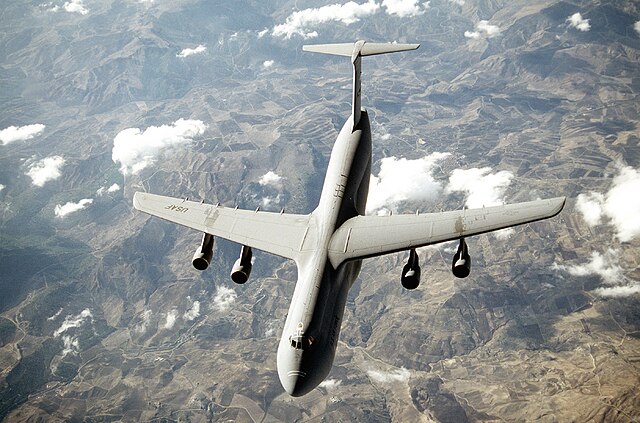
The C-5 Galaxy was developed in the 1960s to meet the US Air Force’s need for a heavy strategic airlift aircraft that was capable of transporting oversized cargo. At the time, the United States was fighting in the Vietnam War. It entered service in 1970, replacing the Lockheed C-141 Starlifter and Douglas C-133 Cargomaster, and has undergone several upgrades since. For example, the C-5M Super Galaxy program introduced new engines and avionics to extend the aircraft’s service life.
The C-17 Globemaster III was developed later, entering active service in 1995. It was designed to replace older transport aircraft, such as the Lockheed C-130 Hercules, and provide a modern solution for strategic and tactical airlift. This would free up the C-5 for other missions. The C-17’s development faced a number of challenges, including cost overruns and technical problems, but it has ultimately become a key asset for the US and several allied air forces.
A key thing to consider, as well, is the cost of producing each aircraft. The C-5 has a price tag of $167.7 million USD, while the C-17 comes in at a hefty $218 million.
How do the C-17 Globemaster III and C-5 Galaxy differ in size?
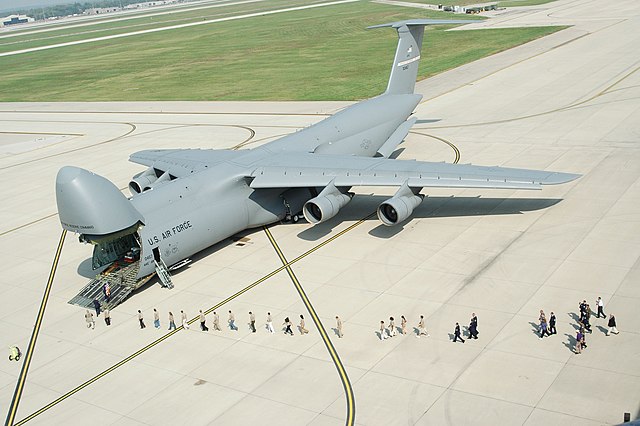
The C-5, with its massive 247-foot length and 222-foot wingspan, is one of the largest military aircraft ever built. Its high T-tail and distinctive nose visor allow for the loading of oversized cargo through both front and rear doors. The smaller C-17, on the other hand, was designed with versatility in mind, with a wingspan of 169 feet and a length of 174 feet. Its body includes both a swept wing and a T-tail, making it ideal for short-field performance and tactical operations.
The C-5’s larger size allows it to carry more cargo, making it ideal for strategic airlift missions that require the transportation of heavy and oversized equipment. The C-17, with its more compact design, excels in tactical airlift roles. It’s capable of operating from airfields and delivering cargo directly to forward operating bases (FOBs).
Roar of different engines
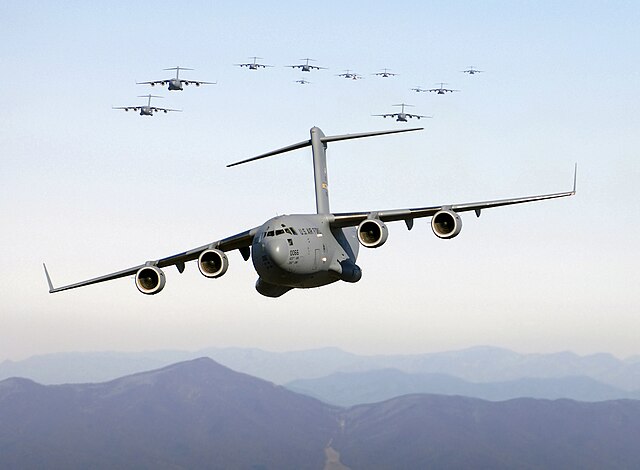
The C-5 Galaxy is equipped with four General Electric CF6 turbofan engines, each providing 43,000 pounds of thrust. These enable the aircraft to achieve a maximum speed of 532 MPH and a range of 5,500 miles. The C-17 is powered by four Pratt & Whitney F117-PW-100 turbofan engines that each produce 40,440 pounds of thrust. This allows the cargo aircraft to reach a maximum speed of 520 MPH and fly a distance of just over 2,700 miles.
The engines for each reflect their intended roles. The C-5’s are optimized for long-range strategic missions, providing the power needed to transport heavy loads over intercontinental distances. The C-17’s slightly less powerful engines are more efficient and reliable in tactical environments, where short takeoffs and landings are essential.
Comparing performance
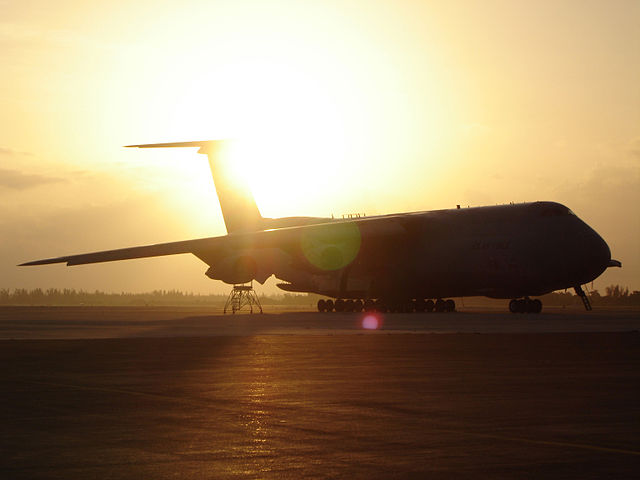
When comparing the performance of the C-5 Galaxy and C-17 Globemaster III, several differences become immediately obvious.
The C-5 Galaxy has a larger payload capacity. It’s capable of carrying upwards of 281,000 pounds of cargo, compared to the C-17’s 170,900 pounds. This makes the former the preferred option when it comes to transporting heavy machinery and oversized cargo. However, the C-17’s ability to operate from shorter runways and its agility give it an edge in tactical scenarios.
In terms of range, the C-5 outperforms the C-17; it’s able to fly 5,500 miles without the need for refueling. This extended range is crucial for long-haul missions, allowing the aircraft to reach distant locations without needing to perform intermediate stops.
The C-17 compensates for its shorter range with its versatility and ability to perform airdrops and rapid deployments.
Where have the C-5 Galaxy and C-17 Globemaster III seen action?
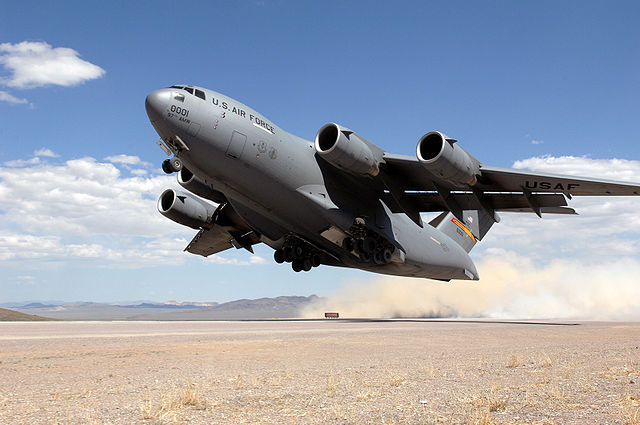
The C-5 Galaxy is primarily used for strategic airlift missions, with a focus on transporting large quantities of cargo and personnel across long distances. It has proven to be instrumental in historic operations like the Gulf War, Operation Enduring Freedom, the Vietnam War and various humanitarian missions. It also participated in relief operations following the 9/11 attacks.
The C-17 Globemaster III, while also capable of performing strategic airlift roles, excels in more tactical-focused ones. Designed to operate from short, unimproved runways, it’s ideal for the rapid deployment and direct delivery of troops and equipment to combat zones. The aircraft played a critical role in operations in Iraq and Afghanistan, as well as disaster relief efforts in Haiti and other regions.
In terms of international operators, the C-17 has been adopted by the likes of the British Royal Air Force (RAF), the Royal Canadian Air Force (RCAF) and the Indian Air Force. The C-5 is solely flown by the US Air Force.
More from us: Northrop YF-23: The Diamond-Winged Fighter That Couldn’t Out-Perform Lockheed’s F-22 Raptor
Want to become a trivia master? Sign up for our War History Fact of the Day newsletter!
Ultimately, the choice between the C-5 Galaxy and C-17 Globemaster III depends on specific mission requirements. Each offers its own advantages, making them indispensable assets in military airlift operations.
The post C-5 Galaxy vs C-17 Globemaster III: What’s the Difference Between These Cargo Aircraft? appeared first on warhistoryonline.
C-5 Galaxy vs C-17 Globemaster III: What’s the Difference Between These Cargo Aircraft?
Philippines Truth
Post a Comment
0 Comments